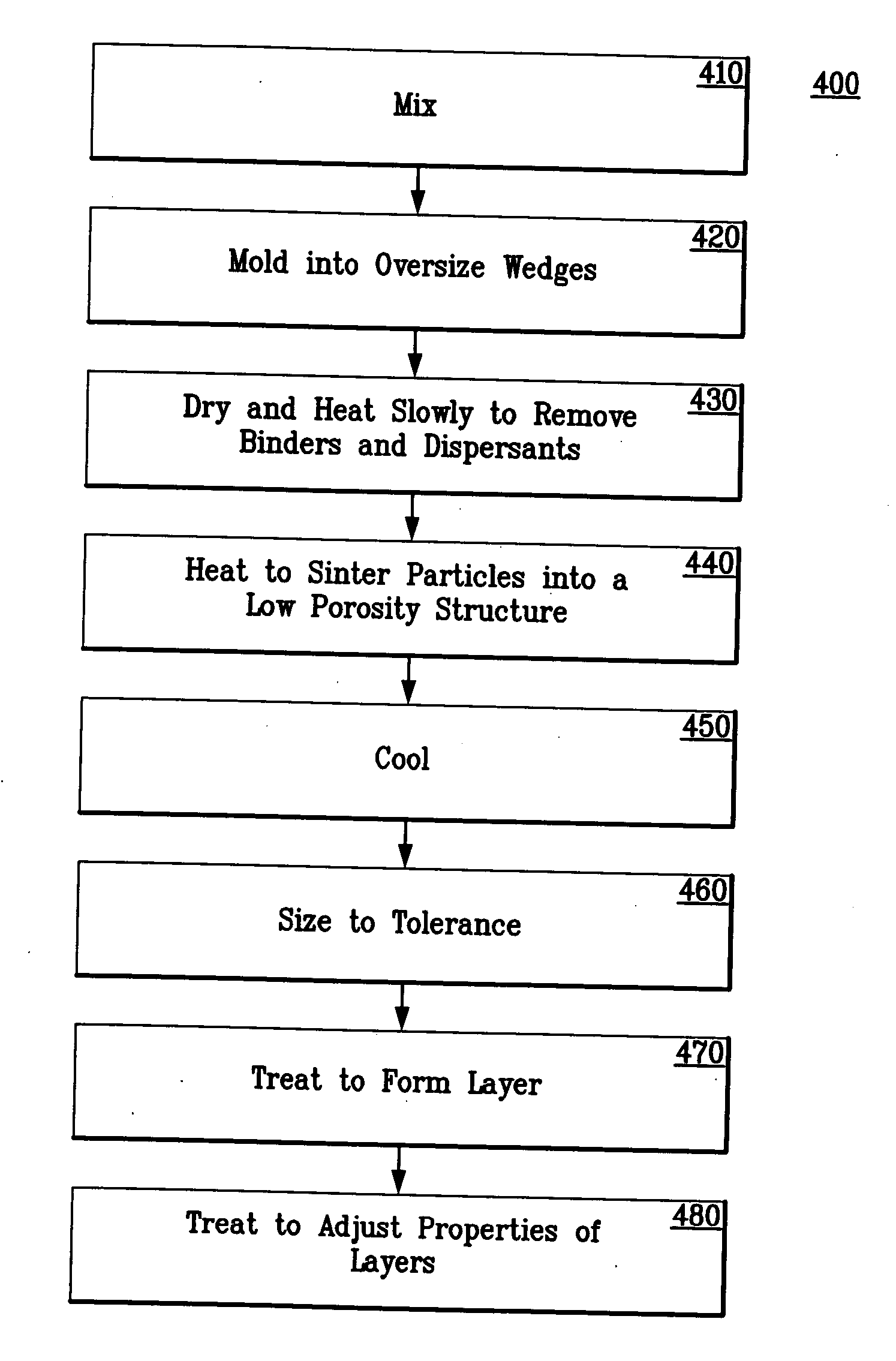Dissipative pick and place tools for light wire and LED displays
- Summary
- Abstract
- Description
- Claims
- Application Information
AI Technical Summary
Benefits of technology
Problems solved by technology
Method used
Image
Examples
Embodiment Construction
[0033] Various embodiments of the present invention allow for an LED to be picked up from a wafer and placed on a carrier with a pick-and-place tool or machine. The part of the tool that comes in contact with the LED is, in an embodiment, made with a conductive or insulative material that conducts electricity at a rate sufficient to prevent charge buildup but not at so high a rate as to overload the LED.
[0034]FIG. 1 illustrates a series of exemplary die collets, which may be used in various embodiments of the present invention with respect to conducting electricity at a rate sufficient to prevent charge buildup and also at a rate that prevents an overload of a device in contact or physical proximity of the die collets. Die collets may be used to attach, for example, a die to a substrate. The inside of die collets, in exemplary embodiments, may have slants sides (for example, 90 degrees) but may be modified to various slant configurations depending upon the needs of the particular t...
PUM
 Login to View More
Login to View More Abstract
Description
Claims
Application Information
 Login to View More
Login to View More - R&D
- Intellectual Property
- Life Sciences
- Materials
- Tech Scout
- Unparalleled Data Quality
- Higher Quality Content
- 60% Fewer Hallucinations
Browse by: Latest US Patents, China's latest patents, Technical Efficacy Thesaurus, Application Domain, Technology Topic, Popular Technical Reports.
© 2025 PatSnap. All rights reserved.Legal|Privacy policy|Modern Slavery Act Transparency Statement|Sitemap|About US| Contact US: help@patsnap.com



